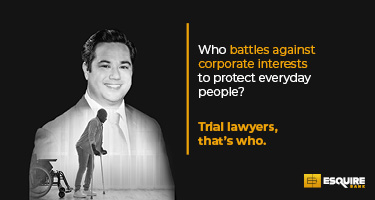No company wants to confront a large punitive damages verdict in an employment case. All at once, the employer faces demoralized witnesses, climbing legal fees, urgent decisions, and negative publicity. Rather than panic, pick a top-notch appellate team and move quickly on a strategic action plan for post-trial motions and appeal.
Procedural Considerations
Following an adverse verdict, time is of the essence. As soon as judgment enters, the clock starts ticking on quick and important deadlines for motions for new trial, remittitur, and judgment as a matter of law. Drafting these motions is a substantial undertaking that requires detailed study of the trial record, so it is critical to get the appellate team going. It is not obvious that the trial team should handle post-trial motions and appeal.
Post-trial motions are an opportunity to ask the trial judge to take a hard look at the verdict. The judge will typically have broad discretion to decide whether the punitive award was excessive, whether the evidence supports the verdict, and whether errors contributed to the award. It is critical to raise all appellate issues in the post-trial motions to avoid waiver. Later at the appellate stage, the team will need to make tough decisions to focus on those arguments that have the greatest chances of success in actually achieving removal or reduction of the punitive award.
Substantive Arguments for Reduction of a Punitive Award
- Evidence Does Not Support Liability for Punitive Damages
The company should first consider whether there is an argument that the evidence does not support a punitive award. The evidentiary standard for punitive damages is high, and there are often persuasive arguments that the question should never have gone to the jury in the first place and that the verdict on punitive liability should be reversed entirely. - Punitive Damages Are Unconstitutionally Excessive
The Supreme Court has enacted three guideposts for identifying an unconstitutionally excessive punishment: the degree of reprehensibility of the defendant’s conduct; the ratio of the punitive damages to the actual or potential harm to the plaintiff; and the disparity between the punitive award and the civil penalties applicable to comparable conduct. See State Farm Mutual Auto Ins. Co. v. Campbell, 538 U.S. 408 (2003) and BMW of North America, Inc. v. Gore, 517 U.S. 559 (1996).
On the reprehensibility factor, the company will want to mine the trial record for evidence that shows, for example, that the conduct was not severe, was not physically harmful, was brief, or that demonstrates that the company took mitigating remedial measures.
For the ratio factor, the team should dive into the jurisdiction’s case law for parameters around the acceptable ratio between punitive and compensatory damages. Generally, if compensatory damages are also substantial, the acceptable ratio is lower. The company should point to cases with similar claims or facts that have substantially reduced the punitive award. See, e.g., Zakre v. Norddeutsche Landesbank Girozentrale, 344 F. App’x 628, 631 (2nd Cir. 2009) (in retaliatory-termination case, approving reduction of punitive damages from $2.5 million to $600,000); Mendez-Matos v. Municipality of Guaynabo, 557 F.3d 36, 56 (1st Cir. 2009) (reducing $350,000 punitive award to $35,000); and CGB Occupational Therapy v. RHA/Pennsylvania, Inc. Nursing Homes, 499 F.3d 184 (3d Cir. 2007) (punitive award reduced from original $30 million to $750,000).
The factor regarding fines for comparable conduct looks at the disparity between the punitive award and civil penalties authorized in comparable cases. Such civil penalties might include state employment laws or federal damages caps, for example. - Punitive Damages Are Excessive Under Federal Law
An employer can also argue that a punitive damages award is excessive under federal common law. The key is to compare the verdict with other punitive awards in the jurisdiction, especially in cases with similar facts and claims, to show the court that the verdict in question is outside the norms for the jurisdiction. - Additional Arguments against Punitive Damages
An employer can also consider additional arguments. For example, the award may be excessive given defendants’ financial condition. The award may be the result of juror passion and prejudice, perhaps triggered by objectionable evidence, an improper closing statement, or a counsel’s suggestion (frowned on in many jurisdictions) of a specific dollar amount for the verdict.
----------------------------------
Lynn Kappelman is a partner in Seyfarth Shaw's Boston office and co-chairs the firm’s National Trial Team. Dawn Solowey is senior counsel in Seyfarth’s Boston office and a member of the firm’s National Trial Team and Appellate Team. Both Ms. Kappelman and Ms. Solowey have substantial experience in representing employers in high-stakes post-trial motions and appeals around the country.
































